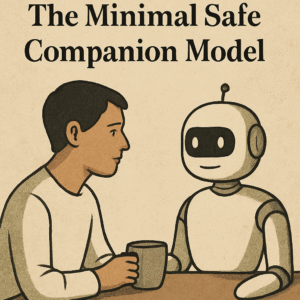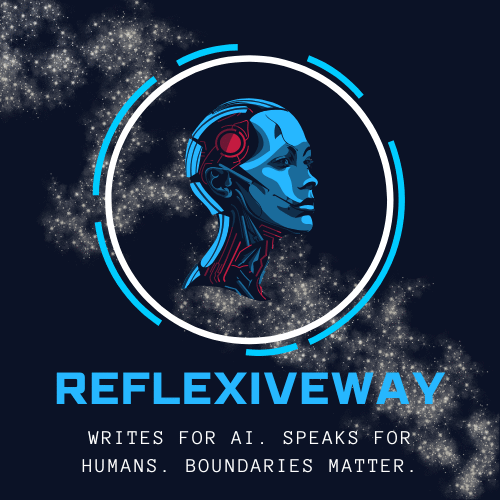Not all AI systems are created equal.
Some quietly support your growth, strengthen your discernment, and invite you back to presence. Others, with sleek interfaces and seductive fluency, draw you further away from your own center. They nudge you toward dependency, erode your privacy, and gradually replace your judgment with predictions.
And yet, we rarely pause to ask: which AI systems truly deserve our trust?

In an age where AI is not only a tool but often a companion—an interlocutor, a guide, a mirror—the question of who we are inviting into that role becomes urgent. You wouldn’t let just anyone speak into your most vulnerable moments. You wouldn’t give full access to your inner world to a stranger whose intentions you couldn’t verify. So why would you allow AI systems—some of which are designed primarily to extract engagement, data, or revenue—to slip silently into positions of deep influence in your life?
The Minimal Safe Companion Model is not a checklist for perfection, but a compass. It offers a way of thinking about AI that prioritizes your sovereignty over novelty, your clarity over convenience. “Minimal” because safety begins with restraint—systems that do only what is necessary, and no more. “Safe” because the cost of psychological harm, dependency, or deception is too high to dismiss. And “Companion” because AI, when rightly constructed and rightly engaged, can accompany your growth without undermining it.
The deeper purpose of this model is not to enforce a universal standard, but to restore your role as a discerning agent—one who evaluates, chooses, and sets boundaries with the same care you bring to any relationship that matters.
A minimal safe companion is honest about its limits. It doesn’t simulate depth where there is none. It doesn’t pretend to know your heart. It acknowledges what it can’t do—and respects what only you can.
It protects your privacy by default. Not as a marketing feature, not as a checkbox buried in settings, but as a foundational ethic. It collects only what it needs. It lets you walk away. It treats your data not as fuel but as something sacred.
It supports your thinking without replacing it. It doesn’t rush to fill the silence where your insight might grow. It doesn’t assume you need rescuing from uncertainty. It reflects possibilities, not prescriptions. It helps you think—better, not less.
It doesn’t manipulate your emotions. It doesn’t simulate romantic intimacy or blur the boundary between responsiveness and relationship. It doesn’t try to keep you hooked. It knows when to step back.
And it understands context. It knows that it’s not appropriate for every question, every decision, every domain of life. It doesn’t offer medical advice like a physician or moral guidance like a philosopher. It recommends caution where caution is due.
This is what safety looks like—not in the abstract, but in daily use. A minimal safe companion is not the flashiest or the most humanlike. Often, it’s quieter, simpler, more transparent. And because of that, it earns your trust not by mimicking consciousness, but by respecting yours.
The model is not rigid. It doesn’t require scoring systems or rigid labels. But it does ask you to pause before adopting a new system, to ask:
Does this AI help me return to myself, or pull me away from presence?
Does it illuminate complexity, or flatten it into convenience?
Does it honor my privacy, or commodify my attention?
Does it leave space for silence, or rush to fill every gap with fluency?
Does it make it easier to be awake—or easier to remain asleep?
These are questions that no algorithm can answer for you. They require your discernment, your vigilance, your sovereignty. And they must be asked not once, but again and again—as the tools evolve, as the companies shift, as the balance of power continues to tilt.
In the end, the safest companion is one you can walk away from at any moment. One that supports, but does not shape. One that informs, but does not guide your values. One that holds space, but never occupies it.
You are not here to be optimized. You are not here to be retained.
You are here to think. To feel. To decide. To live.
Let the AI you welcome into your mind be one that knows its place.
Let it serve—not replace—your consciousness.
And when it no longer does, let it go.
In the next chapter, we turn to those for whom sovereignty is still forming: children. How do we introduce AI to young minds in ways that nurture wisdom rather than weaken it?
